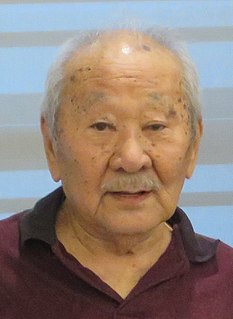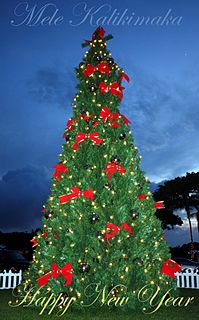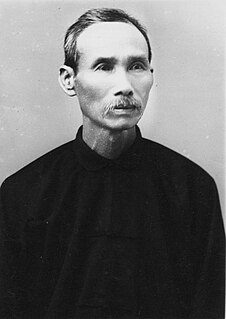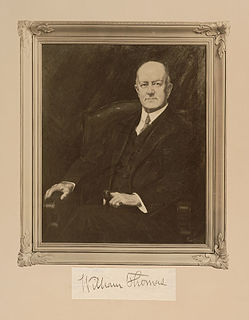External links
- Zimmerman, Elwood C. (1958). Insects of Hawaii. 7 Macrolepidoptera. University of Hawaii Press, Honolulu. hdl:10125/7336.
| This Larentiinae moth related article is a stub. You can help Wikipedia by expanding it. |
| Progonostola cremnopis | |
|---|---|
| Scientific classification | |
| Kingdom: | |
| Phylum: | |
| Class: | |
| Order: | |
| Family: | |
| Genus: | |
| Species: | P. cremnopis |
| Binomial name | |
| Progonostola cremnopis Meyrick, 1899 | |
Progonostola cremnopis is a moth of the family Geometridae. It was first described by Edward Meyrick in 1899. It is endemic to the Hawaiian islands of Kauai, Oahu, Molokai and Hawaii.
The description of Robert Cyril Layton Perkins (1913) reads: "Near Honolulu it may be found resting on tree-trunks or the stems of tree-ferns on Mt. Tantalus, and on the decomposed lava of steep cliffs at Nuuanu Pali."
| This Larentiinae moth related article is a stub. You can help Wikipedia by expanding it. |

Honolulu is the capital and largest city of the U.S. state of Hawaii, which is located in the Pacific Ocean. It is an unincorporated county seat of the consolidated City and County of Honolulu, situated along the southeast coast of the island of Oʻahu, and is the westernmost and southernmost major U.S. city. Honolulu is Hawaii's main gateway to the world. It is also a major hub for international business, finance, hospitality, and military defense in both the state and Oceania. The city is characterized by an eclectic mix of various Asian, Western, and Pacific cultures, as reflected in its diverse demography, cuisine, and traditions.

Niʻihau anglicized as Niihau is the westernmost main and seventh largest inhabited island in Hawaii. It is 17.5 miles (28.2 km) southwest of Kauaʻi across the Kaulakahi Channel. Its area is 69.5 square miles (180 km2). Several intermittent playa lakes provide wetland habitats for the Hawaiian coot, the Hawaiian stilt, and the Hawaiian duck. The island is designated as critical habitat for Brighamia insignis, an endemic and endangered species of Hawaiian lobelioid. The United States Census Bureau defines Niʻihau and the neighboring island and State Seabird Sanctuary of Lehua as Census Tract 410 of Kauai County, Hawaii. Its 2000 census population was 160; Its 2010 census population was 170.

Lahaina is the largest census-designated place (CDP) in West Maui, Maui County, Hawaii, United States and includes the Kaanapali and Kapalua beach resorts. As of the 2010 census, the CDP had a resident population of 11,704. Lahaina encompasses the coast along Hawaii Route 30 from a tunnel at the south end, through Olowalu and to the CDP of Napili-Honokowai to the north. During the tourist season, the population can swell to nearly 40,000 people.

The Hawaii State Capitol is the official statehouse or capitol building of the U.S. state of Hawaii. From its chambers, the executive and legislative branches perform the duties involved in governing the state. The Hawaii State Legislature—composed of the twenty-five member Hawaii State Senate led by the President of the Senate and the fifty-one member Hawaii State House of Representatives led by the Speaker of the House—convenes in the building. Its principal tenants are the Governor of Hawaii and Lieutenant Governor of Hawaii, as well as all legislative offices and the Legislative Reference Bureau.

Kaʻiulani was the only child of Princess Miriam Likelike, and the last heir apparent to the throne of the Hawaiian Kingdom. She was the niece of King Kalākaua and Queen Liliʻuokalani. After the death of her mother, Princess Kaʻiulani was sent to Europe at age 13 to complete her education under the guardianship of British businessman and Hawaiian sugar investor Theo H. Davies. She had not yet reached her eighteenth birthday when the 1893 overthrow of the Hawaiian Kingdom altered her life. The Provisional Government of Hawaii rejected pleas from both her father Archibald Scott Cleghorn, and provisional president Sanford B. Dole, to seat Kaʻiulani on the throne, conditional upon the abdication of Liliʻuokalani. The Queen thought the Kingdom's best chance at justice was to relinquish her power temporarily to the United States.

ʻĀinahau was the royal estate of Princess Victoria Kaʻiulani, heir to the throne of the Kingdom of Hawaiʻi.

Mānoa is a valley and a residential neighborhood of Honolulu, Hawaiʻi. The neighborhood is approximately three miles east and inland from downtown Honolulu and less than a mile from Ala Moana and Waikiki at 21°18.87916′N157°48.4846′W.

Kapa is a fabric made by native Hawaiians from the bast fibres of certain species of trees and shrubs in the orders Rosales and Malvales.

Foster Botanical Garden, measuring 13.5 acres (5.5 ha), is one of five public botanical gardens on Oahu. It is located at 50 North Vineyard Boulevard, Honolulu, Hawaii, United States, near Chinatown at the intersection of Nu'uanu Avenue and Vineyard Boulevard. Foster is in a highly urban area with strip malls, schools, and both Buddhist and Methodist religious facilities nearby.

Kona coffee is the market name for coffee cultivated on the slopes of Hualalai and Mauna Loa in the North and South Kona Districts of the Big Island of Hawaii. It is one of the most expensive coffees in the world. Only coffee from the Kona Districts can be described as "Kona". The weather of sunny mornings, cloud or rain in the afternoon, little wind, and mild nights combined with porous, mineral-rich volcanic soil create favorable coffee growing conditions. The loanword for coffee in the Hawaiian language is kope, pronounced [ˈkope].

Pandanus tectorius is a species of Pandanus (screwpine) that is native to Malesia, eastern Australia, and the Pacific Islands. It grows in the coastal lowlands typically near the edge of the ocean. Common names in English include thatch screwpine, Tahitian screwpine, hala tree, pandanus, and pu hala in Hawaiian. The fruit is sometimes known as hala fruit.

Metrosideros polymorpha, the ʻōhiʻa lehua, is a species of flowering evergreen tree in the myrtle family, Myrtaceae, that is endemic to the six largest islands of Hawaiʻi. It is a highly variable tree, being 20–25 m (66–82 ft) tall in favorable situations, and a much smaller prostrate shrub when growing in boggy soils or directly on basalt. It produces a brilliant display of flowers, made up of a mass of stamens, which can range from fiery red to yellow. Many native Hawaiian traditions refer to the tree and the forests it forms as sacred to Pele, the volcano goddess, and to Laka, the goddess of hula. ʻŌhiʻa trees grow easily on lava, and are usually the first plants to grow on new lava flows.

Satoru Abe is a Japanese American sculptor and painter.
One of only two states in the United States of America able to grow coffee plants commercially is Hawaii, the other being California. However, it is not the only coffee grown on U.S. soil; for example, Puerto Rico has had a coffee industry for some time, although it is not a state but a U.S. territory. Ramiro L. Colon worked in the coffee industry of Puerto Rico since 1925, for example. There are two other experimental coffee growing projects taking place in the United States in Santa Barbara, CA and in Georgia.

Christmas in Hawaii is a major annual celebration, as in most of the Western world.

Chun Afong was a Chinese businessman and philanthropist who settled in the Hawaiian Kingdom during the 19th century and built a business empire in Hawaii, Macau and Hong Kong. He immigrated to Hawaii from Guangdong in 1849 and adopted the surname Afong after the diminutive form of his Cantonese given name, Ah Fong.

James Austin "Kimo" Wilder was an artist, writer, and scouting pioneer in Hawaii. Wilder was born on May 22, 1868 in Honolulu, Hawaii, the son of shipping magnate Samuel Gardner Wilder. He had five siblings.